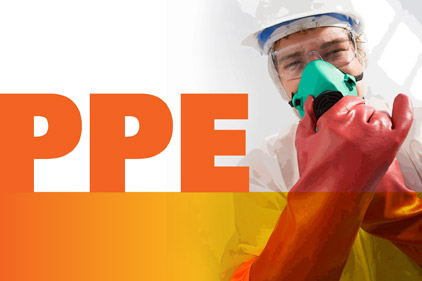From OSHA’s final rule for electric power generation, transmission and distribution
Paragraph (l)(8)(v) of § 1910.269 requires employers, in certain situations, to select protective clothing and other protective equipment with an arc rating that is greater than or equal to the incident heat energy estimated under § 1910.269(l)(8)(ii).
Based on laboratory testing required by ASTM F1506-10a, the expectation is that protective clothing with an arc rating equal to the estimated incident heat energy will be capable of preventing second-degree burn injury to an employee exposed to that incident heat energy from an electric arc. Note that actual electric-arc exposures may be more or less severe than the estimated value because of factors such as arc movement, arc length, arcing from reclosing of the system, secondary fires or explosions, and weather conditions.
Additionally, for arc rating based on the fabric's arc thermal performance value 25(ATPV), a worker exposed to incident energy at the arc rating has a 50-percent chance of just barely receiving a second-degree burn. Therefore, it is possible (although not likely) that an employee will sustain a second-degree (or worse) burn wearing clothing conforming to § 1910.269(l)(8)(v) under certain circumstances. However, reasonable employer estimates and maintaining appropriate minimum approach distances for employees should limit burns to relatively small burns that just barely extend beyond the epidermis (that is, just barely a second degree burn). Consequently, protective clothing and other protective equipment meeting § 1910.269(l)(8)(v) will provide an appropriate degree of protection for an employee exposed to electric-arc hazards.
Paragraph (l)(8)(v) of § 1910.269 does not require arc-rated protection for exposures of 2 cal/cm2 or less. Untreated cotton clothing will reduce a 2-cal/cm2 exposure below the 1.2- to 1.5-cal/cm2 level necessary to cause burn injury, and this material should not ignite at such low heat energy levels. Although § 1910.269(l)(8)(v) does not require clothing to have an arc rating when exposures are 2 cal/cm2 or less, § 1910.269(l)(8)(iv) requires the outer layer of clothing to be flame resistant under certain conditions, even when the estimated incident heat energy is less than 2 cal/cm2, as discussed later in this appendix.
Additionally, it is especially important to ensure that employees do not wear undergarments made from fabrics listed in the note to § 1910.269(l)(8)(iii) even when the outer layer is flame resistant or arc rated. These fabrics can melt or ignite easily when an electric arc occurs. Logos and name tags made from non-flame-resistant material can adversely affect the arc rating or the flame resistant characteristics of arc-rated or flame resistant clothing. Such logos and name tags may violate § 1910.269(l)(8)(iii), (l)(8)(iv), or (l)(8)(v).
Paragraph (l)(8)(v) of § 1910.269 requires that arc-rated protection cover the employee's entire body, with limited exceptions for the employee's hands, feet, face, and head. Paragraph (l)(8)(v)(A) of § 1910.269 provides that arc-rated protection is not necessary for the employee's hands under the following conditions:
|
For any estimated incident heat energy |
When the employee is wearing rubber insulating gloves with protectors. |
|
If the estimated incident heat energy does not exceed 14 cal/cm2 |
When the employee is wearing heavy-duty leather work gloves with a weight of at least 407 gm/m2 (12 oz/yd2). |
Paragraph (l)(8)(v)(B) of § 1910.269 provides that arc-rated protection is not necessary for the employee's feet when the employee is wearing heavy-duty work shoes or boots. Finally, § 1910.269(l)(8)(v)(C), (l)(8)(v)(D), and (l)(8)(v)(E) require arc-rated head and face protection as follows:
|
Exposure |
Minimum head and face protection |
|||
|
None * |
Arc-rated faceshield with a minimum rating of 8 cal/cm2* |
Arc-rated hood or faceshield with balaclava |
||
|
Single-phase, open air |
2-8 cal/cm2 |
9-12 cal/cm2 |
13 cal/cm2 or higher †. |
|
|
Three-phase |
2-4 cal/cm2 |
5-8 cal/cm2 |
9 cal/cm2 or higher ‡. |
|
* These ranges assume that employees are wearing hardhats meeting the specifications in § 1910.135 or § 1926.100(b)(2), as applicable.
† The arc rating must be a minimum of 4 cal/cm2 less than the estimated incident energy. Note that § 1910.269(l)(8)(v)(E) permits this type of head and face protection, with a minimum arc rating of 4 cal/cm2 less than the estimated incident energy, at any incident energy level.
‡ Note that § 1910.269(l)(8)(v) permits this type of head and face protection at any incident energy level.


